Economic data released since the September signaled that the recovery might have lost momentum. This is a worrying signs as renewed lockdown measures in light of the second wave are expected to damage the recovery further. As a preparatory meeting for more stimulus in December, ECB will turn more dovish this month. Stimulus measures to be announced in December will likely included expansion and extension of the PEPP program, as well modification of terms in TLTRO-III facility. ECB should still refrain from cutting rates lower for now.
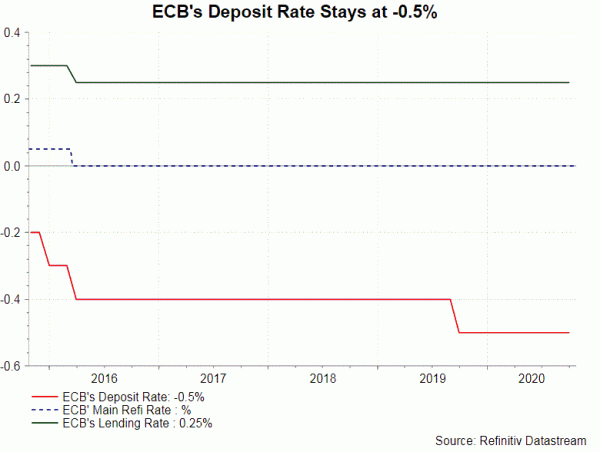
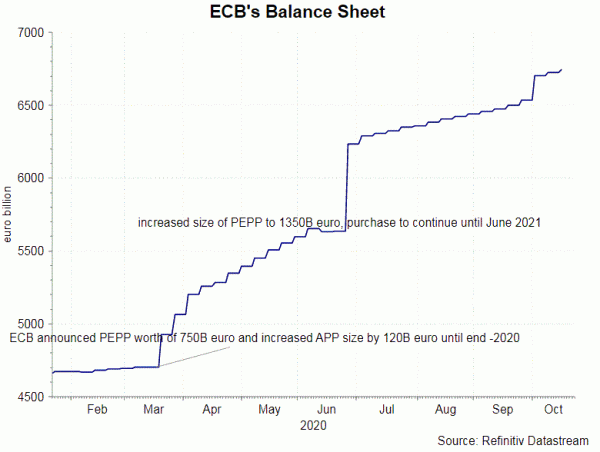
Eurozone’s GDP contracted -11.8% q/q in 2Q20, by far the sharpest decline since the time series started in 1995. GDP declined -3.7% q/q in 1Q20. The 3Q20 figure will be released this week, a day after ECB’s meeting. The market expects a strong rebound to +9.2% growth. We note, however, that the recovery is losing momentum. Together with new lockdown measures implemented in response to the second wave of the outbreak, the negative effects will be more evident in the fourth quarter. ECB projected a +3.1% growth for 4Q20. Yet, we believe that the downside risk is higher.
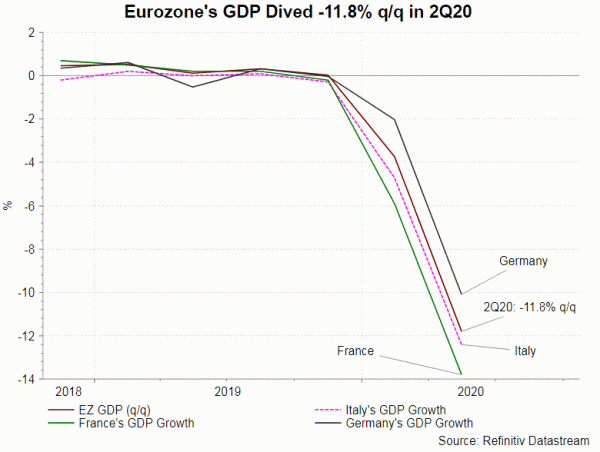
Headline HICP deflation worsened further to -0.3% y/y in September, from -0.2 a month ago. Core inflation, excluding oil and food, decelerated further to +0.4%, from +0.2% in August. Last month’s weakness was mainly driven by temporary factor. Germany’s reduction in VAT triggered a downward pressure on the general price level. That being said, the report was a disappointing one. Services inflation dropped to only +0.5% in September, compared with +1.6% (February) before the outbreak. The flash readings for October will be released a day after this week’s ECB meeting.
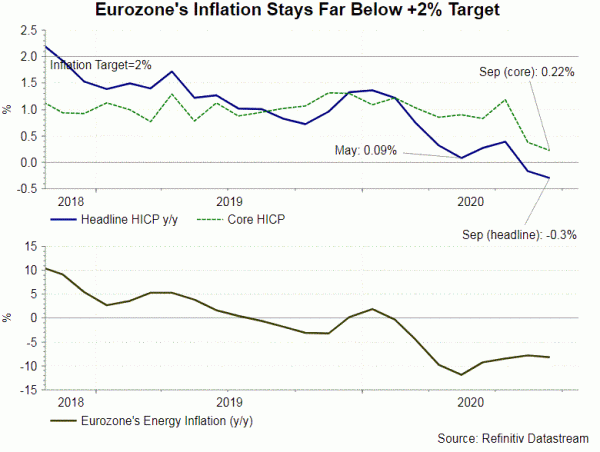
Other data also converged to the view the region’s recovery has lost momentum. For instance, industrial production contracted -7.2% y/y in August, from -7.1% a month ago. Market sentiment has weakened with the ZEW expectations index plunged sharply to 52.3 in October, from 73.9 in the prior month. Released last week, Markit’s composite PMI dropped -1 point to 49.4 in October. The services PMI fell -1.8 points to 46.2 while the manufacturing index improved to 54.4 from September’s 53.7. Weakness in the latter was likely affected pandemic-related restrictive measures. As noted in the accompanying report, the region is at “increased risk of falling into a double-dip downturn as a second wave of virus infections led to a renewed fall in business activity in October”. The report also emphasized the risks of divergence in activities amongst countries. It concluded by warning that “While the overall downturn remains only modest and far slighter than seen during the second quarter, the prospect of a slide back into recession will exert greater pressure on the ECB to add more stimulus and for national governments to help cushion the impact of COVID-19 containment measures, which not only tightened across the region in October but look set to be stepped up further in November”.
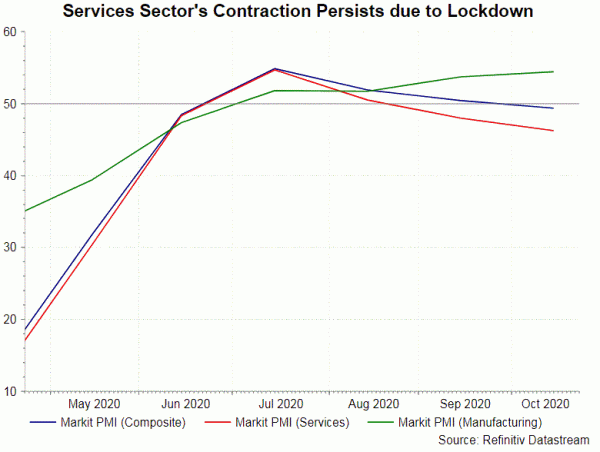
More monetary policy easing measures are needed against this backdrop. Indeed, speeches ECB officials after the September meeting have stressed the urgency of more stimulus. For instance, President Christine Lagarde suggested that “new restrictions are adding to the uncertainty and weighing on the recovery; the rebound… now risks losing momentum; If the situation deteriorates, our projections, which we will revise in December, will obviously be gloomier”. This echoed board member Fabio Panetta’s earlier comment that “the resurgence of infections we are seeing in a number of euro area countries is weakening the recovery, especially in the services sector”. Yves Mersch also suggested that “the recovery remains incomplete and prone to setbacks”.
Besides the need to revive the economy, the members have intensified concerns about euro’s strength since the last meeting. While the market was disappointed about ECB’s attitude towards euro at the September meeting, the minutes (released on October 9) revealed that policymakers viewed euro’s appreciation as not only a risk to inflation but also to growth. The members suggested that “it was the pace of the euro’s appreciation, rather than the level of the exchange rate, that could become a concern”. The members believed more communication with the public is needed regarding the movement of the euro. It was suggested that future communication should “emphasize that inflation pressures were expected to remain subdued on account of weak demand, lower wage pressures and the appreciation of the euro exchange rate”. This issue should be closely monitored especially before and after the US presidential election in the coming week.
We expect the October meeting will be used to prepare the market for more stimulus later this year (December). Therefore, we expect the tone will be more dovish than that in September. Looking to December, we believe the measures will involve expansion of the size PEPP, as well as extension of the operation to end-2021. Terms in TLTRO-III facility could also be improved to attract lending to business. Further rate cut to the negative territory remains unlikely.

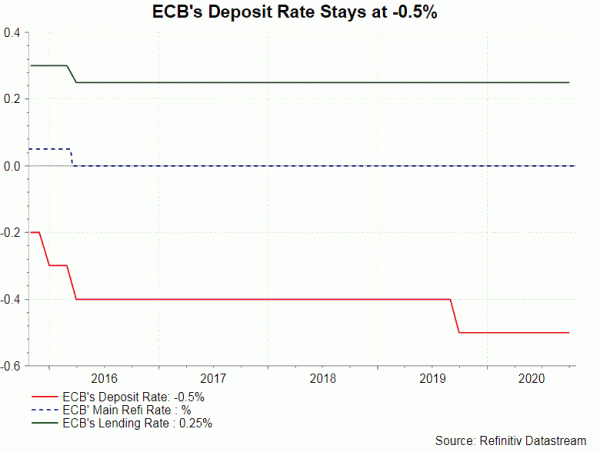
 Signal2forex.com - Best Forex robots and signals
Signal2forex.com - Best Forex robots and signals




